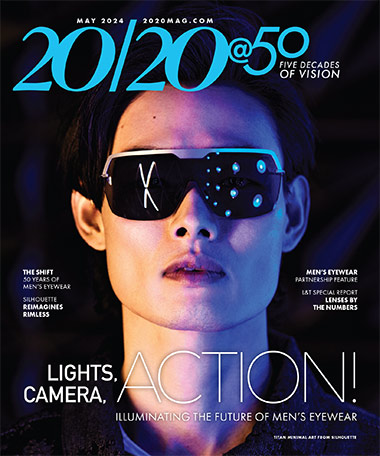Corneal curvature may not always have a direct correlation with refractive error. Astigmatism presents an additional challenge to the fitting process as well. Here the cornea is steeper in one direction than the other. The rule of thumb when fitting a patient with astigmatism is to fit the lens based on the flattest meridian. This is called fitting "on K." With GPs more than soft lenses, whose flexibility will accommodate toric corneas, it is critical to be able to accurately identify this parameter. In addition, it is important to recall the tear lens that was described earlier. If we have a spherical lens equal to the flattest curvature sitting on a toric surface there will be a toric tear lens nullifying the astigmatic error. This will often correct for the patients' astigmatism without it being necessary to put this correction into the lens.
 |
Worth special mention in the contact lens fitting world is the condition known as keratoconus.
Keratoconus is a corneal condition involving degeneration in the basement membrane and Bowmen's layer. As it progresses the stroma thins and the internal pressure of the eye causes the cornea to bulge out into a cone shape. This thinning can cause irregular astigmatism to manifest as well. Irregular astigmatism is when the axis is not 90 degrees from the point of greatest curvature. As these symptomsworsen GPs become necessary for smoothing out the refractive surface of the eye. In the most extreme cases the cone may be so steep that a GP does not fit well. One solution that has been successfully employed involves putting a soft lens on first then piggybacking a hard lens on top. This would stabilize the fit as well as make the GP more comfortable.










